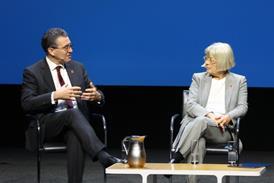It’s one of my missions to get it through law firms’ metaphorical skulls that just because they are unique businesses, it doesn’t mean they can’t learn a huge amount from how other business sectors work. Customer relationship management is a perfect case in point.
I live in Southwark in Central London, which means, among other things, that I have more delivery pizza joints to choose from than Eversheds has fee-earners. I only use one of them, however. Here’s why:
Last Christmas-time, the missus and I ordered a pizza from our favourite place, Pizze Cucina. We don’t order very often, but whenever we do they know who we are, where we live and what we like. They keep both our mobile numbers and our landline attached to the one customer record file. They don’t prompt us to order what we did last time. At Christmas, though, they took our order as normal but delivered, on the side, a pudding with a note that said: ‘We know you ordered from us all year, and we really appreciate that. Have this dessert on us.’ And we did.
They know all this because they keep the good information – but that didn’t make Pizze Cucina act on the information. That took thought. And that thought didn’t make us order again – on it’s own, that’s not enough. But, incrementally, Pizze Cucina has nestled in our minds as the most thoughtful provider of pizza in town. Why would we shop anywhere else?
That’s how customer relationship management (CRM), which is the IT behind Pizze Cucina’s knowledge, can be turned into loyalty. Systems can’t do it alone – you have to have the information and the strategic thinking.
For a good exposition of this, read Grania Langdon-Down’s piece on CRM in the latest In Business supplement, which you can download here.

















![Eleanor Clarke - 029[8]](https://d1d8vslyhr7rdg.cloudfront.net/Pictures/274x183/1/5/1/120151_eleanorclarke0298_527574_crop.jpg)







No comments yet